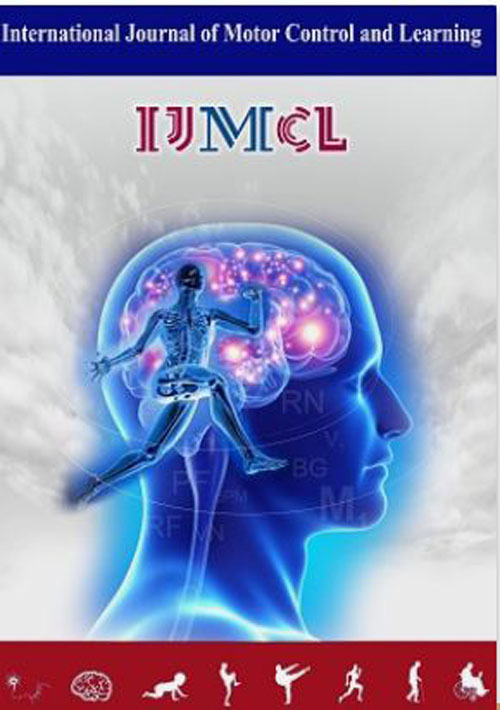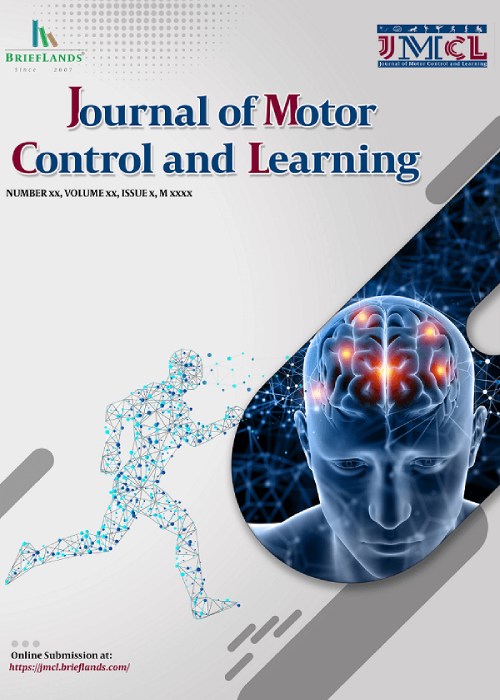فهرست مطالب

Journal of Motor Control and Learning
Volume:4 Issue: 2, Spring 2022
- تاریخ انتشار: 1401/03/29
- تعداد عناوین: 6
-
-
Pages 1-8Background
This article systematically reviews the available literature on biomechanically motivated interventions to improve running economy aside from conventional endurance training. It was aimed to identify the possible mechanisms behind the potential improvements and to extract principles to guide researchers and coaches in how to make use of this potential.
Evidence acquisitionThe search strategy yielded 26 intervention papers and four reviews which were suitable for inclusion.
ResultsIt was concluded that plyometric and strength training protocols were consistently beneficial to reduce the oxygen consumption per distance traveled in steady state running showing an average effect size of 3.8%. Footwear interventions showed smaller effects of 1.9% on average but still may offer considerable improvements which can potentially be applied immediately.
ConclusionsIt was suggested that the energy consumption savings achieved by footwear interventions are not realizable by energy return mechanisms of the footwear alone. It is most likely that footwear assists to improve RE by optimizing energy storage and return mechanisms within the biological system. Future research should aim at verifying this interplay to provide more efficient training programs as well as footwear which ameliorates the utilization of the mechanisms embedded within the human locomotor system.
Keywords: Running economy, Plyometric training, Strength training, Footwear, Energy return -
Pages 9-13
Background
To test the hypothesis that a 20-s bout of unilateral index finger tapping, followed by 10 min rest, increases the freely chosen tapping rate performed by the contralateral index finger, in a second 20-s bout.
MethodsTwenty healthy adults performed tapping with the index finger on one hand followed by a 10 min rest period and tapping with the other index finger. Tapping was performed at freely chosen rate. Testing was performed with dominant hand first as well as in the opposite order.
ResultsFreely chosen tapping rates from the first bouts were 161.6±94.2 and 162.8±80.3 taps per min for the dominant and non-dominant hand, respectively (p=0.903; R=0.89, p<0.001). When bout one was performed with the non-dominant hand, the rate increased by 15.0%±22.3% in about two (p=0.008). In the opposite order, the rate remained similar (+4.8%±17.9%, but p=0.655).
ConclusionBased on the present, as well as previously published results, the interpretation is that 20 s of initial index finger tapping appears to constitute a borderland for elicitation of subsequent contralateral excitation of freely chosen tapping rate.
Keywords: Cross-limb Transfer, Interlimb Transfer, Motor Control, Preferred Tapping Frequency, Rhythmicity -
Pages 14-21Background
Skilled athletes’ optimal performance might be due to their postural ability to counteract perturbation. However, how expertise influences coordination of anticipatory postural adjustment (APA) and main movement under temporal pressure needs more investigation. This study aimed to investigate how available time (temporal pressure) for central nervous system to prepare postural and motor commands, differentiates skilled and novice postural capacity during performing Table Tennis Forehand stroke.
Methods10 skilled (20.3±1.15 years old) and 10 novice (19.9±0.99 years old) Table Tennis players while maintaining Forehand stroke position on two force plates, stand in front of a screen that presenting Coincident Anticipation Timing stimulus. Participants completed a block of 20 trials consisted of random-order presentation of fast and slow stimuli and surface muscle activity of postural muscles were recorded using Electromyography device, simultaneously.
ResultsThe results of two-way MANOVA showed that, more/less temporal pressure for central nervous system led to later/earlier onset time of APA with lower/higher magnitude, respectively. Skilled players’ postural strategy was higher magnitude of APA in dorsal muscles (Erector Spainae, Biceps Femoris and Gasterocnemous), more backward peak excursion and lower velocity of centre of pressure.
ConclusionAlthough such findings may be beneficial factors for coaches in programming athletes’ training, however, the similarity in anticipatory postural adjustments’ onset time of novice and skilled players, do not let certain conclusion about the effects of expertise on feed-forward control of posture.
Keywords: Electromyography, Coincidence Anticipation, Anticipatory Postural Control, Table Tennis, Muscle Activation -
Pages 22-25Background
This study aimed to investigate the relationship between social physique anxiety and nutritional behaviors among male and female students of the university.
MethodsThe research was descriptive-correlational. The statistical population consisted of all students of the University of Tehran in 2020, from which 221 people (females: n=110) and (male: n=111) (mean age: 21.12 ± 2.6 years) were randomly selected and completed the Social Physique Anxiety and Eating Disorders questionnaires. The Social Physique Anxiety Scale was used to collect data and the Garner and Garfinkel 26-item Eating Disorder Questionnaire was used to assess nutritional behaviors. The Pearson correlation test was used to examine the relationship between research variables. Due to the normality of the data based on the K-S test, an independent T-test.
ResultsThe results showed that girls with upper extremity social physique anxiety have an eating disorder (r = 0.20, P≥0.05). On the other hand, boys with upper extremity social physique anxiety showed overeating eating behavior (r = 0.15, P≥0.05). No significant difference was observed in other components.
ConclusionAccording to the results of the study, girls who have high social physique anxiety are more likely to develop dietary behaviors. However, overeating eating behavior is seen in those boys who have high social physique anxiety.
Keywords: Sports Motivation, Social Anxiety, Team, Individual Sports, Blind, Visually Impaired -
Pages 26-30Background
Sports psychology literature shows that motivation is essential in individual and team sports. This study compares sports motivation and Social Physique Anxiety (SPA)between blind and visually impaired elite athletes in individual and team sports.
MethodsThe study is comparative in terms of design. The population was Iranian professional blind and visually impaired athletes in 2021. The sample includes N=110, n=35 in team sports (football and Goalball) and n=75 in individual sports (swimming, chess, wrestling, athletics), selected by convenience sampling method. The research tool was Sport Motivation Scale (SMS-18) and Social Physique Anxiety Scale (SPAS). Descriptive statistics (mean and standard deviation) and inferential statistics (independent t-test and analysis of variance) are used to analyze the data with SPSS 24.
ResultsThe results show a significant difference between the stimulating experience of athletes in individual and group sports in sports motivation components (P<0.05), and no significant difference is observed for other research variables (P>0.05). Also, the analysis of variance showed no significant difference between the elite athletes in individual and team sports in terms of sports motivation (P = 0.982) and SPA (P = 0.937).
ConclusionIt is suggested that the factors affecting the motivation of sports participation of blind athletes in other sports should be examined. We need to focus more on programs that reduce SPA in blind and visually impaired athletes.
Keywords: Sports Motivation, Social Anxiety, Team, Individual Sports Athletes, The Blind


